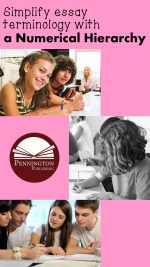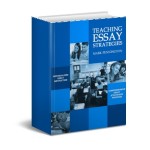The Difference between Facts and Claims
What is the difference between these two declarative sentences?
- Abraham Lincoln was assassinated in April of 1865 by John Wilkes Booth.
- Abraham Lincoln was assassinated in April of 1865 to keep African-American slaves from gaining U.S. citizenship.
Answer: The assassination is a fact attested by eyewitnesses and medical experts. The reason for the assassination is a claim made by John Wilkes Booth that Lincoln must be killed to prevent granting U.S. citizenship to former slaves.
Knowing the difference between fact and claim is critically important to effective argumentation in both speaking and in writing.
Let’s work at developing a precise definition of these terms: fact and claim.
The word fact is from Latin factum something done, from factus made, from facere to make]
Collins English Dictionary – Complete and Unabridged, 12th Edition 2014 © Harper Collins Publishers 1991, 1994, 1998, 2000, 2003, 2006, 2007, 2009, 2011, 2014
The word claim is from Old French claimer< Latin clāmāre to cry out; (noun)
American Heritage® Dictionary of the English Language, Fifth Edition. Copyright © 2011 by Houghton Mifflin Harcourt Publishing Company. Published by Houghton Mifflin Harcourt Publishing Company. All rights reserved.
Here’s our first definition.
Fact: Something actually done or something said in a meaningful way.
What is fact?
- Fact is something that could be verifiable in time and space. Example: The wall was painted blue in 2016. The fact would certainly be verifiable if the school office files contained a similar shade of blue paint chip, attached to a dated 2016 receipt for blue paint and a painting contractor’s 2016 dated invoice marked “Paid in Full.”
- Fact is an objective reflection of reality. A fact exists independent of our sensory experience. Example: “If a classroom’s walls are blue, then someone must have painted them that color.”
What isn’t fact?
- Fact is not definition. Examples: “It’s a fact that blue is a mix of green and yellow” or “2 +2 = 4 and If A = B and B = C, then A = C.” Definitions simply state that one thing synonymously shares the same essence or characteristics of another thing. Much of math deals with meaningful definitions, called tautologies, not facts, per se.
- Fact is not opinion. Example: It’s a fact that the wall color is an ugly shade of blue. Explanation: Again, a fact does not state what something is (a definition). A fact does not state a belief. In contrast, an opinion is a belief or inference (interpretation, judgment, conclusion, or generalization). Check out the related article on Teaching Fact and Opinion by the same author.
- Fact is not a scientific theory. Example: The universe began fifteen billion years ago with the “Big Bang.” Explanation: “Facts and theories are different things, not rungs in a hierarchy of increasing certainty. Facts are the world’s data. Theories are structures of ideas that explain and interpret facts. Facts do not go away when scientists debate rival theories to explain them.” Stephen Jay Gould
- Fact cannot be wrong. Example: He got his facts about the blue wall all wrong. Explanation: We really mean that he did not state facts or that he misapplied the use of those facts.
- Fact is not the same as truth. Example: It’s a fact that the classroom walls are blue. Explanation: This is known as a category error. We can state the fact that the walls were painted blue or the fact that someone said that they are blue, but this is not the same as truth. There is no process of falsification with facts, as there is with truth. For example, we could not say “It’s not a fact that the classroom walls are black.” Similarly, in a criminal court case, if a defendant pleads not-guilty to the charge that he or she murdered someone, the prosecution must falsify this plea and prove the truth of the guilty charge via evidence, such as facts, in order to convict the defendant.
- Fact is not a phenomenological representation of reality. Example: The walls appear blue during the day, but have no color at night. Explanation: Just because the blue color appears to disappear at night due to the absence of light, does not mean that this describes reality. To say that the sun rises in the east and sets in the west describes how things appear from our perspective, not what factually occurs.
Here’s our second definition.
Claim: An assertion of belief about what is true or what should be.
What is a claim?
- A claim can be a judgment. Example: Undocumented immigrants who maintain clean criminal records should be not be deported from our country. Explanation: A claim can weigh evidence and reach a conclusion based upon that evidence.
- A claim can be an inference. Example: The recent missile tests indicate that the country has developed the means to attack neighboring countries. Explanation: The test results regarding missile capabilities can be logically applied to hypothetical situations.
- A claim can be an interpretation of evidence. Example: The fact the DNA tested on the murder weapon matches the blood type of the defendant means that the defendant could have fired the weapon that killed his wife. Explanation: The interpretation that the physical evidence links to the defendant is a claim. The fact supports the claim.
- A claim can express a point of view. Example: The election of that candidate would be horrible for the country. Explanation: A point of view expresses an arguable position and frequently considers contrasting points of views by stating counterarguments and refutations.
- A claim can be supported by research, expert sources, evidence, reasoning, testimony, and academic reasoning. Example: The new research on cancer cures is promising. Explanation: Specific research and quotations from medical authorities may offer convincing evidence.
What isn’t a claim?
- A claim is not an opinion. Examples: Mr. Sanchez is the best teacher in the school (opinion). Mr. Sanchez’ students perform above the school average on standardized tests (claim). Explanation: The former opinion cannot be proven to be true. The latter claim could be proven to be true with test evidence and data comparisons.
- A claim is not evidence. Example: In the book, Walk Two Moons, Phoebe was self-centered when she demanded the best bed at the sleepover. Explanation: In an argumentative essay claims can be stated in the thesis and/or topic sentences. For the balance of the essay, the writer uses reason or evidence (which may include facts) and analysis to support the claim(s).
- A claim is not description. Example: The sunset’s shades of yellow, red, and orange were quite remarkable. Explanation: Description does not assert a truth as a claim does.
Applications to Speaking and Writing
- Use facts to support your claims and not vice versa.
- Using more than one fact to support a specific claim can be effective if the facts are directly related. Avoid using a shotgun approach of loosely related facts.
- Facts usually do not stand on their own as effective evidence. Facts require careful analysis to relate to the claim(s).
- Don’t rely upon facts as your sole evidence. Other types of evidence can be convincing. A variety of evidence addresses the needs of a variety of readers and provides balance to how you prove your argument. Check out this article on types of evidence by the same author.
- A claim is not your argument. A claim is not the same thing as the thesis statement or the topic sentences in an argumentative essay. The claim is your overall belief about what is true. How you prove your claim is your argument and your essay structure provides the means to that end.
- Keep your claim specific. General claims usually are not provable and resort to mere description.
- Effective claims usually do not consist of absolute statements about what is right and wrong. They explore ideas, theories, points of view, and concepts. In other words, claims rarely involve simple assertions; they are usually multi-faceted and complex.
- Always acknowledge possible counterclaims and provide counterarguments when relevant.
*****

TEACHING ESSAYS BUNDLE
The author’s TEACHING ESSAYS BUNDLE includes the three printable and digital resources students need to master the CCSS W.1 argumentative and W.2 informational/explanatory essays. Each no-prep resource allows students to work at their own paces via mastery learning. How to Teach Essays includes 42 skill-based essay strategy worksheets (fillable PDFs and 62 Google slides), beginning with simple 3-word paragraphs and proceeding step-by-step to complex multi-paragraph essays. One skill builds upon another. The Essay Skills Worksheets include 97 worksheets (printables and 97 Google slides) to help teachers differentiate writing instruction with both remedial and advanced writing skills. The Eight Writing Process Essays (printables and 170 Google slides) each feature an on-demand diagnostic essay assessment, writing prompt with connected reading, brainstorming, graphic organizer, response, revision, and editing activities. Plus, each essay includes a detailed analytical (not holistic) rubric for assessment-based learning.



